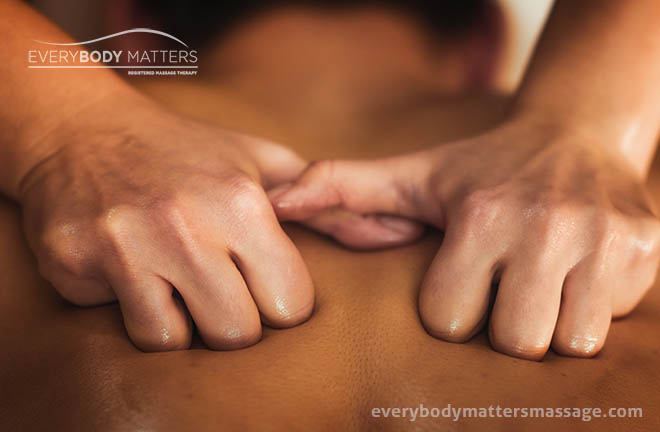Unlocking the Benefits: Understanding Different Massage Techniques

The Importance of Massage Therapy
Massage therapy is an ancient practice that has been used for thousands of years to promote healing, relaxation and overall well-being. It involves the manipulation of soft tissues in the body, including muscles, tendons, ligaments and fascia. The benefits of massage therapy are numerous and can help alleviate a wide range of physical and emotional ailments.
One of the primary benefits of massage therapy is its ability to reduce stress and anxiety. When you receive a massage, your body releases endorphins – natural chemicals that promote feelings of happiness and well-being.
This can help lower your heart rate, reduce blood pressure and decrease cortisol levels in the body – all things that are associated with stress reduction. Massage therapy can also help improve circulation throughout the body.
As your therapist applies pressure to different areas of your body, blood flow increases to those areas. This can help deliver more oxygen and nutrients to your muscles and other tissues, which can speed up healing times after injury or surgery.
Furthermore, massage therapy can improve flexibility and range of motion by reducing muscle tension and promoting relaxation. This can be particularly beneficial for athletes or individuals who engage in regular physical activity.
A Brief Overview of Different Massage Techniques
There are many different types of massages available today, each with its unique benefits and techniques. Some popular types include Swedish massage, deep tissue massage, sports massage, hot stone massage, aromatherapy massage and pregnancy massage. Swedish Massage is perhaps one of the most common types used today thanks to its versatility in treating various symptoms like back pains or arthritis due to work-related stress or age issues among other causes; while Deep Tissue Massage focuses on applying greater force on specific points than Swedish Massage technique does by targeting knots within muscle groups around joints; Sports Massages as suggested by their name, are exercise-oriented and designed for those involved in sports or athletics; Hot Stone Massage uses warm, smooth stones on strategic points of the body to release tension and promote relaxation.
The versatility of massage therapy and its various techniques make it an excellent option for people with different needs. In the following sections of this article, we will take a closer look at some of these techniques, including their benefits and how they are performed.
Swedish Massage Technique
The Origin of Swedish Massage Technique
Swedish massage, sometimes referred to as “classical massage,” was developed in the early 19th century by a Swedish doctor named Per Henrik Ling. Combining his knowledge of physiology and gymnastics, Ling created a massage that focused on long strokes, kneading, and circular movements on the topmost layers of muscles.
This therapeutic technique became popular around the world due to its effectiveness in promoting relaxation and reducing muscle tension. Today, Swedish massage is one of the most common types of massages offered in spas and wellness centers.
The Benefits and Effects on the Body
The benefits of Swedish massage are numerous. The technique is well-known for its ability to increase circulation throughout the body. By using long strokes along with compression techniques, blood flow is increased which can help lower blood pressure and improve overall cardiovascular health.
In addition to physical benefits, Swedish massages also promote mental wellness by reducing stress levels. The combination of relaxing movements with essential oils can leave individuals feeling refreshed both physically and mentally.
Swedish massages have also been known to reduce pain associated with conditions like sciatica or arthritis. By targeting specific areas where pain may be present, therapists can apply pressure techniques that help release built-up tension or sharp muscle contractions.
How to Perform a Swedish Massage
To perform a basic Swedish massage you will need a comfortable table or mat for your client to lie on and some oil or lotion for lubrication purposes. First make sure your client feels comfortable by providing blankets if necessary or asking if they’d like any adjustments made before starting. Begin with effleurage (long gliding strokes) on their back going from their neck down towards their legs.
Use firm but gentle pressure while applying additional lotion when needed. Continue this motion for several minutes making sure you get every part of their back.
Next, use petrissage (kneading) to massage the client’s back. You can do this by using your thumbs and fingers to apply pressure while moving in a circular motion.
This technique targets deeper layers of muscle tissue and can help relieve tension. After working on the back you can move onto the arms, legs, and feet using similar techniques.
Remember to ask your client if they prefer more or less pressure during each step of the process. Overall, Swedish massages are a great option for those wanting a relaxing massage that can promote both physical and mental well-being.
Deep Tissue Massage Technique
The Definition and Origin of Deep Tissue Massage Technique
Deep tissue massage is a technique that involves the use of intense pressure to manipulate the deeper layers of muscles and connective tissues. It is a form of therapeutic massage that focuses on relieving pain and stiffness in targeted areas, such as neck, shoulders, back, and legs.
The origin of deep tissue massage can be traced back to ancient civilizations where it was commonly practiced as a form of healing therapy. However, it wasn't until the 1940s when Therese Pfrimmer developed a deep tissue massage technique that utilized long strokes with sustained pressure to alleviate muscle tension.
The Benefits and Effects on the Body
There are numerous benefits to receiving regular deep tissue massages. One primary benefit is its ability to decrease chronic pain caused by injury or overuse syndromes such as carpal tunnel syndrome or tennis elbow. Additionally, it can increase joint mobility while reducing muscle tension which has been shown in studies to improve function in people with chronic low back pain.
This technique can also help reduce stress levels due to its ability to stimulate the release of endorphins which are natural painkillers that promote feelings of relaxation. Another significant effect on the body is its ability to break up scar tissue.
Scar tissue forms after an injury or surgery and can lead to limited range of motion or ongoing pain if not addressed properly. Deep tissue massage helps break up this scar tissue using friction techniques which allow for increased circulation in affected areas leading to quicker healing times.
How To Perform A Deep Tissue Massage
Performing a deep tissue massage requires specific knowledge and training in order not only for it be effective but also for safety reasons as well. It's important for therapists who perform this type of therapy do so with proper precautions such as adjusting pressure and focusing on specific areas to prevent injury. The therapist should begin by warming up the muscles with lighter pressure before gradually increasing intensity and depth as the muscles relax.
This may feel uncomfortable at times, but it's important to communicate any pain or discomfort with your therapist so they can adjust accordingly. The technique involves using direct pressure with the fingers, thumbs, and elbows that move slowly through muscle fibers in a cross-fiber pattern.
The therapist should focus on areas of tension where muscles are tight or knotted while also being aware of sensitive areas like bony prominences (e.g., spine). It is essential for clients to remain relaxed as tensing up during a deep tissue massage can actually cause more discomfort and defeat the purpose of releasing tension.
Pregnancy Massage Technique
Definition and origin of pregnancy message technique
Pregnancy massage is a therapeutic massage tailored specifically for the needs of pregnant women. It is a gentle form of massage that aims to alleviate the physical and emotional discomforts that arise during pregnancy.
The practice has its roots in ancient cultures where it was used to prepare women for childbirth, aid in postpartum recovery, and promote overall wellness. Today, pregnancy massage has become an increasingly popular complementary therapy for expectant mothers.
It involves gentle strokes, kneading, and pressure on specific areas to ease common pains such as backaches, headaches, leg cramps, and swelling. The techniques used are modified to ensure the safety and comfort of both mother and baby.
Benefits of Pregnancy Masssage
The benefits of pregnancy massage extend beyond just physical relief. Studies have shown that regular prenatal massages can reduce anxiety levels, improve sleep patterns, and enhance mood regulation in expectant mothers. In addition to promoting relaxation and reducing stress levels during pregnancy, prenatal massages can also help prepare the body for labor by increasing blood flow to the uterus.
This increased circulation can lead to a shorter labor time as well as decreased use of pain medication during childbirth. Furthermore, prenatal massages can assist in postpartum recovery by reducing muscle tension associated with breastfeeding posture or carrying a newborn.
Conclusion
Massage therapy provides numerous benefits for people from all walks of life. Whether you're looking to reduce stress levels or alleviate chronic pain conditions such as arthritis or fibromyalgia – there's a massage technique out there that's perfect for you.
Understanding different types of massage techniques allows you to better tailor your treatment plan based on your unique needs. Regardless of the technique chosen - from Swedish Massage Technique to Deep Tissue Massage Technique or Pregnancy Massage Techniques - each one offers incredible health benefits when used correctly.
So, why not consider incorporating massage therapy into your wellness routine today? Not only will it provide physical and mental relief, but you may find it to be an enjoyable and relaxing experience.
Do you live in the GTA?
Ready to book your massage?
It's quick and easy, just click the button below and follow the instructions. You will receive confirmation and all the patient intake forms via email. Kindly read, complete and sign intake and consent forms, including cancellation policy. I believe everyone's time is valuable, and as a courtesy to everyone, we thank you for being on time. Late arrivals can only be extended to the time remaining in the scheduled session. If you cancel with less than 24 hours notice, or miss your appointment, you will be charged for the entire amount of your scheduled treatment. Insurance does not reimburse claims for late cancel lations or missed appointments.
If you don't see the time you are looking for, please add yourself to the wait list.
If an appointment becomes available, you wil l be given priority.





